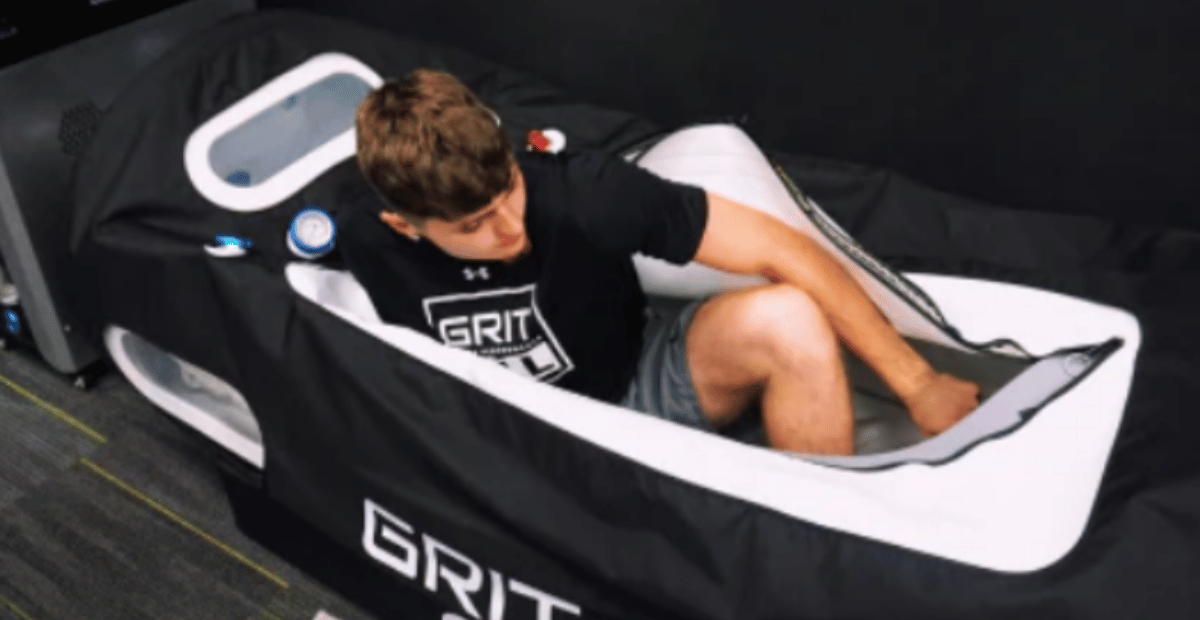Hyperbaric oxygen therapy for Lyme disease is gaining traction as a promising complementary treatment for those struggling with chronic symptoms. By delivering high concentrations of oxygen in a pressurized environment, this therapy may support the body's ability to heal from the persistent effects of Lyme disease, including fatigue, joint pain, and neurological issues.
This article will discuss how hyperbaric oxygen therapy works, its potential benefits, and why more patients and healthcare providers are turning to it as part of an integrative care approach. If you're exploring advanced options for managing Lyme disease, keep reading. You may discover insights that could change your recovery path.
Understanding Lyme Disease: A Persistent Health Challenge
Lyme disease is a bacterial infection caused by the Borrelia burgdorferi bacterium, typically transmitted through the bite of an infected tick. While early symptoms include fatigue, fever, and a tell-tale bullseye rash, the disease can progress to cause joint pain, neurological issues, and cognitive dysfunction if left untreated.
Chronic or late-stage Lyme disease can be particularly challenging. Even after completing standard antibiotic treatments, many patients continue to experience lingering symptoms, a condition sometimes referred to as Post-Treatment Lyme Disease Syndrome (PTLDS). As a result, alternative and complementary therapies like hyperbaric oxygen therapy are being explored to address these ongoing issues.
What Is Hyperbaric Oxygen Therapy and How Does It Work?

Hyperbaric oxygen therapy (HBOT) involves breathing pure oxygen in a pressurized chamber, typically set between 1.3 and 2.0 ATA (atmospheres absolute). The pressurized environment allows your lungs to take in significantly more oxygen than under normal atmospheric conditions.
This increased oxygen intake saturates the blood and tissues, promoting cellular repair, reducing inflammation, enhancing immune response, and helping the body fight off bacterial infections. For individuals seeking hyperbaric oxygen therapy for Lyme disease, these effects can support healing and symptom management, especially when conventional treatments alone aren't enough.
5 Powerful Benefits of Hyperbaric Oxygen Therapy for Lyme Disease Patients
Hyperbaric oxygen therapy for Lyme disease offers hope for those navigating the complexities of this chronic condition. By delivering pure oxygen at higher-than-atmospheric pressures, it enhances the body’s natural ability to heal, repair, and fight infection at the cellular level.
1. Reduces Inflammation
HBOT helps calm the immune system’s overreaction, reducing swelling in joints, muscles, and tissues affected by Lyme. This can lead to less pain, greater mobility, and a more comfortable recovery process for patients with chronic symptoms.
2. Kills Harmful Bacteria
Lyme disease is caused by Borrelia burgdorferi, a bacterium that struggles to survive in high-oxygen environments. HBOT creates conditions that weaken or destroy these pathogens, helping reduce the overall bacterial load in the body.
3. Boosts Immune System Function
Oxygen-enriched tissues help white blood cells operate more effectively, enhancing their ability to target and remove lingering infections. This immune boost is especially useful for chronic Lyme sufferers with compromised or overworked immune systems.
4. Improves Brain and Nerve Function
Many Lyme patients experience brain fog, confusion, and nerve issues. HBOT increases oxygen delivery to the brain and nervous system, potentially improving mental clarity, memory, and focus over time.
5. Supports Recovery from Chronic Fatigue
Fatigue is one of the most debilitating symptoms of Lyme disease. By improving cellular energy production and tissue repair, HBOT can help restore vitality, stamina, and the ability to return to normal daily activities.
Spotlight on Airvida Hyperbaric Chambers for Home and Clinical Use
If you're considering hyperbaric oxygen therapy for Lyme disease, selecting the right chamber can make all the difference in comfort, consistency, and healing outcomes. Airvida Chambers offers trusted options in both soft-shell and hard-shell formats, each tailored to different needs and environments.
Soft-Shell Hyperbaric Oxygen Chambers: Best for Home Comfort and Convenience

Soft-shell hyperbaric chambers are the go-to option for individuals seeking mild hyperbaric therapy from the comfort of home. These chambers generally operate at 1.3 ATA, which is ideal for daily, non-invasive sessions that support the body’s natural healing processes. Lightweight and portable, they can be easily set up in bedrooms, wellness rooms, or dedicated therapy spaces without the need for structural modifications or special electrical wiring.
Featured Soft-Shell Chambers from Airvida:
1.1 - 1.4ATA Airvida Portable Lying Hyperbaric Chamber
1.2 - 1.5ATA Airvida Portable Lying Hyperbaric Chamber
Airvida Pro90 Portable Sitting Hyperbaric Chamber
Airvida Chair Pro 1.4 ATA Hyperbaric Chamber
Hard-Shell Hyperbaric Oxygen Chambers: Built for Power and Professional Use

If you're managing a more advanced case of Lyme disease, or if you’re a clinician offering hyperbaric oxygen therapy for Lyme disease to patients, hard-shell hyperbaric chambers are often the preferred route. Capable of reaching pressures of 1.5 ATA to 2.0+ ATA, these chambers support more intensive treatment with faster oxygen diffusion and deeper tissue penetration. Their robust design also means greater durability, safety features, and comfort enhancements, especially for longer or more frequent sessions.
Featured Hard-Shell Chambers from Airvida:
Airvida Ultra 1.3-2.0 ATA Hard Shell Lying Hyperbaric Chambers
Airvida Elite 1.3-2.0 ATA Hard Shell Sitting Hyperbaric Chamber
Airvida Alpha 90 Hyperbaric Chamber
Airvida Multiplace Hyperbaric Chamber-Phoenix 2
Who Can Benefit from HBOT for Lyme Disease?
While hyperbaric oxygen therapy for Lyme disease is not a universal solution, it may be particularly beneficial for:
-
Individuals with lingering or chronic symptoms after standard Lyme treatment
-
Patients with neurological symptoms like brain fog or nerve pain
-
Those with inflammation-related joint or muscle pain
-
Individuals seeking non-invasive, supportive therapies for long-term recovery
Always consult a healthcare provider familiar with HBOT and Lyme disease before beginning treatment.
Safety, Risks, and Considerations
Hyperbaric oxygen therapy for Lyme disease is generally well-tolerated, especially when administered under professional guidance. However, some people may experience side effects such as:
-
Temporary ear discomfort or sinus pressure
-
Mild fatigue or lightheadedness after sessions
-
Oxygen toxicity (rare, and usually only after extended high-pressure exposure)
Hard-shell chambers offer more precise control over oxygen levels and pressure, making them ideal for those requiring higher-intensity therapy. Soft-shell chambers, while gentler, are a more accessible option for general wellness and long-term support.
Conclusion: A Promising Supportive Option for Lyme Sufferers
Living with Lyme disease can be overwhelming, especially when symptoms persist despite conventional treatments. Thankfully, emerging therapies like hyperbaric oxygen treatment are offering renewed hope by addressing root causes and enhancing the body’s ability to heal from within.
Hyperbaric oxygen therapy for Lyme disease stands out as a powerful, science-backed solution that supports recovery through improved immune response, inflammation reduction, and cognitive clarity. If you're exploring options for long-term relief, we encourage you to contact Airvida Chambers to learn more about the cutting-edge soft-shell and hard-shell hyperbaric chambers featured earlier.
Frequently Asked Questions on Hyperbaric Oxygen Therapy for Lyme Disease
What is the best treatment for Lyme disease?
The best treatment for Lyme disease typically involves a combination of antibiotics like doxycycline, along with supportive therapies such as anti-inflammatory treatments, immune boosters, and in some cases, hyperbaric oxygen therapy. Early detection and treatment yield the best outcomes, helping prevent long-term complications like chronic joint pain or neurological issues.
How many HBOT sessions for Lyme?
Patients often undergo between 20 to 40 hyperbaric oxygen therapy sessions for Lyme disease, depending on symptom severity and chronicity. Some may require even more to experience long-lasting results. Treatments are usually administered daily or several times a week, with improvements in fatigue, cognition, and inflammation noted over time.
What is the rule of 7 for Lyme disease?
The "rule of 7" refers to common Lyme symptoms manifesting in stages, often in 7-day patterns: fever, joint pain, headaches, fatigue, neurological issues, and more. It's a loose guideline used by some practitioners to track symptom progression, especially in persistent or chronic Lyme disease cases. However, it’s not a medical standard.
When should you not use hyperbaric oxygen therapy?
You should avoid HBOT if you have an untreated pneumothorax, certain ear or sinus conditions, severe COPD, or are currently undergoing chemotherapy with specific drugs. Always consult your physician before starting HBOT, especially if you’re pregnant or have other chronic conditions that might make pressure changes risky or uncomfortable.
What kind of issues does hyperbaric oxygen fix?
Hyperbaric oxygen therapy is FDA-approved for conditions like carbon monoxide poisoning, non-healing wounds, decompression sickness, and radiation injuries. Off-label, it's also used for Lyme disease, traumatic brain injury, stroke recovery, and more. It enhances oxygen delivery to tissues, accelerates healing, reduces inflammation, and supports cellular regeneration and immune function.
You May Also Want to Read
5 Key Home Hyperbaric Chamber Benefits You Should Know
How Does A Hyperbaric Chamber Work? An In-Depth Exploration
Best Medical-Grade Red Light Therapy Devices: At-Home & Clinical Use
Disclaimer
Airvida and partners' advice does not constitute medical advice and is intended for informative and educational purposes only, with no medical or non-medical claims being made. While research & studies show the potential Hyperbaric Oxygen Therapy (HBOT) and Hyperbaric Air Therapy (HBAT) may have implied benefits, individual results may vary. It is required by Airvida & Partners to consult with doctors before being approved for Hyperbaric Therapy (HBOT & HBAT). Read More HERE




